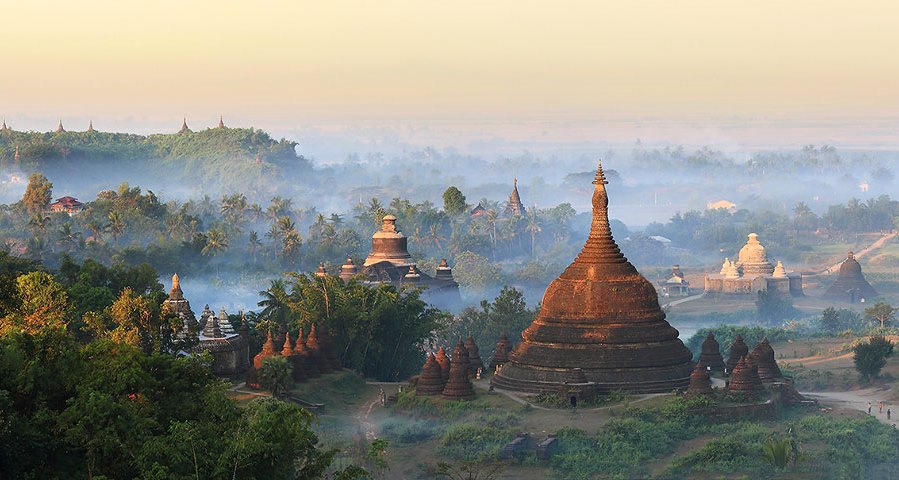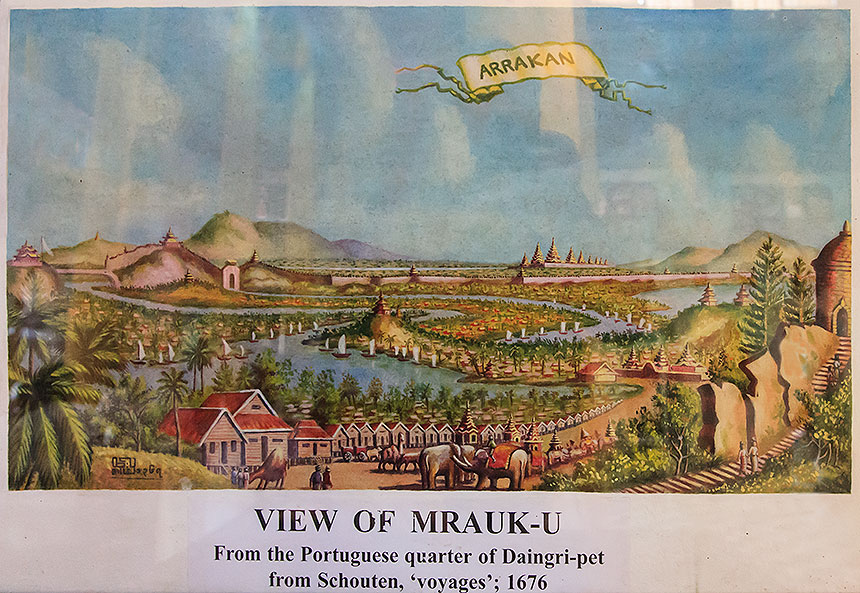Almost unknown outside Asia during its reign, it remains so even today. Mrauk U was as prosperous as London by 1635, with an estimated population of 160,000, which included a few thousand foreign merchants, traders, & armed mercenaries. The Arakan Kings valued themselves so highly, they paid small fortunes to maintain Japanese Samurai as their only trusted bodyguards.
Mrauk U, which means "North Far" may seem to be a sleepy village today but not so long ago it was the capital of the Arakan empire where Portuguese, Dutch and French traders rubbed shoulders with the literati of Bengal and Mughal princes on the run. Mrauk U was declared capital of the Arakanese kingdom in 1431. At its peak, Mrauk U controlled half of Bangladesh, modern day Rakhine State (Arakan) and the western part of Lower Burma. As the city grew, many pagodas and temples were built. Several of them remain, and these are the main attraction of Mrauk-U.

They lie across rolling northern Rakhine State hilltops and form an awe-inspiring sight, whilst providing an experience quite unlike anything else in Myanmar.


The Kingdom of Mrauk-U was an independent coastal kingdom of Arakan which existed for over 354 years. It was based in the city of Mrauk-U, near the eastern coast of the Bay of Bengal. The kingdom from 1429 to 1785 ruled over what is now Rakhine State, Myanmar and Chittagong Division, Bangladesh.

From 1429 to 1531 it was a protectorate of the Bengal Sultanate at different time periods. After gaining independence from Bengal, it prospered with help from the Portuguese settlement in Chittagong. In 1666, it lost control of Chittagong after a war with the Mughal Empire. Its reign continued until the 18th century, when it fell to the invasion of the Burmese Empire.
A distinctive area
Impressive as they are, Mrauk U is more than just old temples and fortresses. The culture of Rakhine is distinct from the rest of Myanmar, in that it is in large measure ethnically Bengali. The food, the smells, the textile designs, and the faces are quite different here. In addition, beyond Mrauk U further upriver lie several Chin villages.

This is of note because the ornately tattooed faces of Chin women are quickly vanishing. When this current older generation passes, so will this centuries old practice of going to great pains to attract a mate. The younger generations have had to resort to sashays and come hither smiles, much to the chagrin of their mothers.

The 'real' Myanmar and how to get there
Mrauk U is the authentic Myanmar you can hope to find in a country closed to the world for many years, as this nation’s popular spots are starting to get spoiled.
One of the reasons Mrauk U is so unspoiled by tourists is it’s not all that easy to get there. First, there’s no airport. That’s key, because airports open the tourist floodgates and 'ruin' a place faster. The only way to get to Mrauk U is by bus or boat, and neither are all that easy.
Rivals Bagan
It seems that when people talk about temples and Stupas, all you hear about is Bagan. True, Bagan is amazing and we loved it, but Mrauk U is also covered with temples and stupas, and they’re especially spectacular because you have them all to yourself. The Shite-Thaung is the biggest and most popular temple in Mrauk U. It’s known for containing 80,000 Buddhas.
Source : luminousjourneys.net | Wikitravel.com | Travelintense.com | Tripadvior



















